Hands-On – Zenith Defy El Primero 21 – From a 10th to a 100th of a Second (Video, Specs & Price)
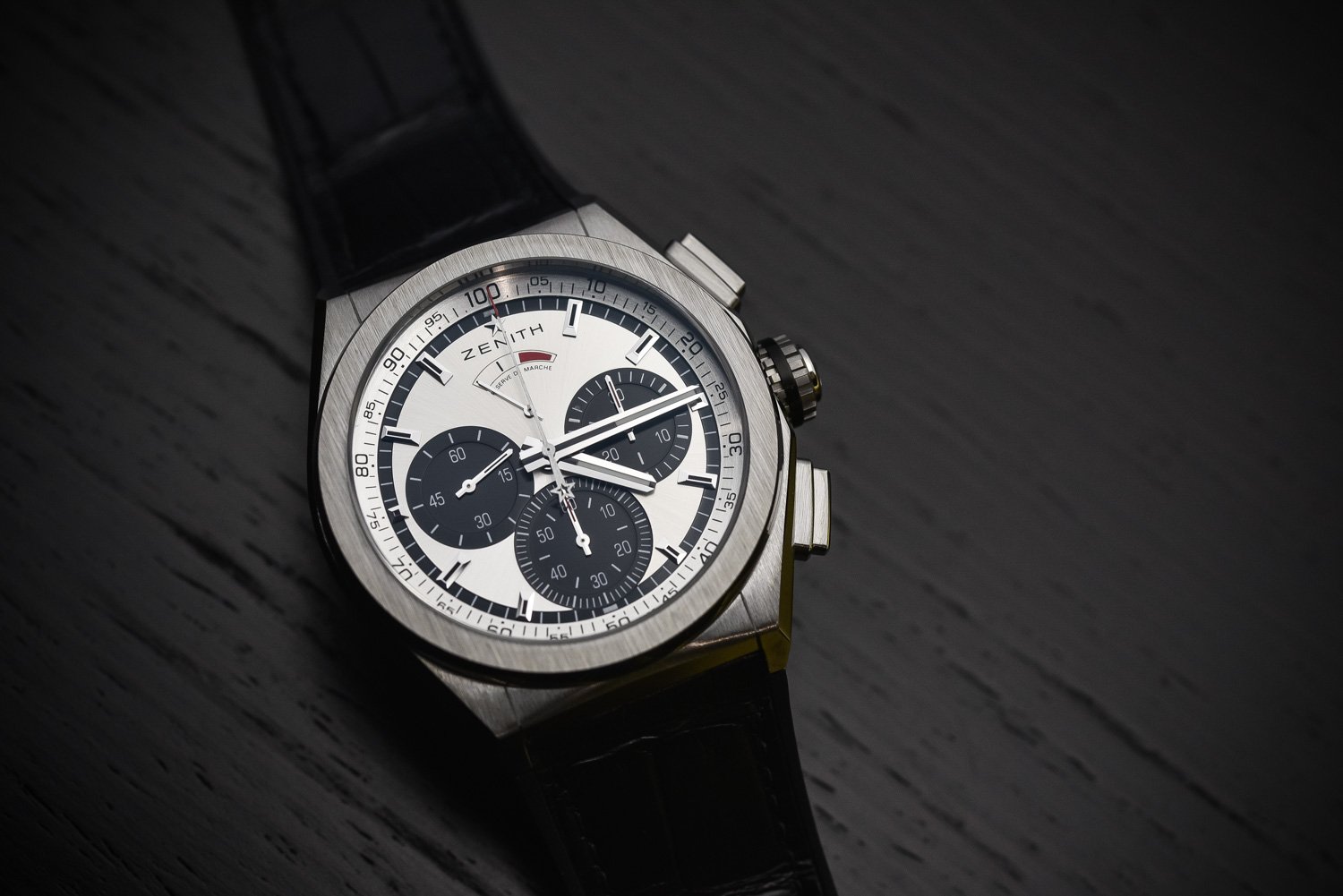
Back in 1969, Zenith introduced a movement that would later become an icon, being both one of the first automatic chronograph movements, and being the 20th century’s king of precision, beating at 5Hz and being precise to a 10th of a second. Its name: the El Primero. At Baselworld, the Le Locle-based manufacture has given this fast-beating engine a 21st century appeal: 50Hz frequency, precision to 100th of a second, modern look, open-worked movement. Here is the Zenith Defy El Primero 21… and it’s fast, very fast.
The story of the Zenith El Primero has almost become legend. When we talk about icons in watchmaking, most of the time we refer to watches as a whole. The El Primero is one of the few iconic movements. It was launched in 1969, as one of the very first (if not the first) automatic chronograph movements, and already showed impressive architecture – fully integrated chronograph with central rotor and column-wheel, far from a last-minute patch-up job. But what made it so special, even in today’s production, was its high-frequency, beating not at 3Hz or 4Hz, like most other chronographs, but at 5Hz / 36,000vph – meaning it was able to indicate the 10th of a second. Still, for Zenith, this was certainly way too 20th century and the manufacture decided that for Baselworld 2017, the icon needed to enter into the 21st century, with more than just an update. And now, you probably guessed why it is named the Zenith Defy El Primero 21.
Zenith Defy El Primero 21 – From 5Hz to 50Hz
5hz… something that watchnerds know to be more than just a number. 5hz means greater accuracy and the ability to time events with a higher precision. 5Hz means 10 beats per second (remember: 1Hz is one oscillation, so actually 2 beats) and that allows you to measure to the 10th of a second, and not to the 6th of a second as with a 3Hz watch or to the 8th of a second as with a 4Hz watch. Besides the higher precision, a measurement to the 10th of a second is simply more coherent with our notion of time. The other added-value of the 5Hz frequency is the ability to achieve a better chronometry (on paper, the faster a regulator beats, the more precise it can be) and the super-smooth run of the second hand.
With the Zenith Defy El Primero 21, it’s not just small improvements that have been made but a massive technical achievement. The 50Hz frequency is not new in watchmaking, yet it has mainly be seen on concept watches or high-end pieces (think TAG Heuer Mikrograph for instance…) Here, Zenith brings the ultra-high-beat to another level, decently priced (below $10k) and meant to be produced on a large scale. Technically, the Zenith Defy El Primero 21 beats 10 times more per second, gives an indication 10 times more precise (now to the 100th of a second) and can makes its second hand run faster too… In short, watch this video and you’ll understand the notion of fast and smooth.
In terms of display, Zenith had to adapt the El Primero to this new concept of the super-fast central hand (which revolves around the dial once per second). The original 1969 El Primero (as well as most of its modern iterations) uses a tri-subcounter display, with central second hand, 12-hour counter at 6, 30-minute counter at 3 and small second at 9. On the Zenith Defy El Primero 21, we have a 100th of a second hand on the central axis, but the second counter is still needed. Thus, the new display consist of a 30-minute counter still at 3, a 60-second counter at 6 and a small second still placed at 9. Now comes the question of the mechanics behind this ultra-fast display.
Zenith Defy El Primero 21 – Dual-balance architecture
Those who know a bit about watchmaking know that having a watch running constantly with a 50Hz frequency would be quite problematic (huge energy consumption, parts that will wear extremely fast…) This is why, like most of the chronographs using a ultra-high-frequency, the Zenith Defy El Primero 21 is based on a dual-balance architecture. As such, the timekeeping part of the watch (the indication of the hours, minutes and seconds) is regulated by the usual 5Hz / 36,000vph of the El Primero. This means that the watch keeps its 50h power reserve and its ability to be chronometer certified by the COSC. The base movement itself remains rather equal to the 1969 version, with automatic winding with central rotor.
Yet, the chronograph part is now controlled by a second balance, this time running at 50Hz / 360,000vph. Imagine this watch as equipped with two independent “gear boxes”: one for the time and the other for the chronograph. Each has its own transmission and escapement system and there is no coupling clutch. In fact, the new Defy El Primero 21 has two barrels, and the winding crown now works in both directions: clockwise for the chronograph, counterclockwise for the watch. 25 turns of the crown are enough to obtain a 100% charge of the chronograph barrel. The rotor, with a star-shaped openworked oscillating weight, handles the one-way automatic winding of the watch function. Due to the high-frequency, energy consumption is ten times higher than in the original movement and thus, there’s only a 50-minute autonomy for the hundredth of a second chronograph (but for the chronograph only, as the watch will still run). The remaining energy of the chronograph section is indicated by a gauge at 12 on the dial.
The second novelty comes from the material used for the balance-springs. As a result of running at such a high-frequency, standard materials can’t be used here. The balance-springs are made of Carbon-Matrix Carbon Nanotube composite (new patented material), more resistant to wear and insensitive to temperature and the influence of magnetic fields (beyond 15,000 Gauss). While the escapement controlling timekeeping is classically located on the dial side of the movement, the second and smaller regulating organ is placed on the movement side, and thus easily visible through the caseback of both versions.
The strength of this new Defy El Primero 21 is not specifically in its frequency or its architecture (already seen in the past) but clearly on the industrialization process. In fact, not only has Zenith made this technology accessible , but it has also conceived the movement with mass-production in mind. While more complex mechanical functions are performed, a smaller number of parts are involved in the movement – from 278 for a standard El Primero 400 to only 203 in the case of the Zenith Defy El Primero 21. The movement is also thicker, but not that much – 7.9 mm thick rather than the original 6.50 mm.
Zenith Defy El Primero 21 – A modernized look
This is where you can clearly see the Biver-influence (J.C. Biver was recently appointed interim-CEO of the brand). Forget about the 38mm case with faceted lugs and the 1960s look of the El Primero. It’s not only the movement that’s entering into the 21st century, but also the look of the watch. The Zenith Defy El Primero 21 is based on a monobloc 44mm case (slightly tonneau-shaped) with a highly raised round bezel and integrated lugs with straps mixing rubber and leather – all of that is quite reminiscent of recent Hublot and TAG Heuer watches. Yet, the DNA of the brand isn’t lost and we can still recognize the Zenith flair in this watch. One thing to note is the actual comfort of the Zenith Defy El Primero 21: light because of the grade 5 titanium or ceramicised-aluminium case, large but highly wearable even on small wrists, thanks to well-shaped straps.
The dials are also in the vein of the Zenith production, whether we look at the standard version with silver and black dial – where we can easily recognize the style of Zenith, with the classical indexes, hands and fonts and slightly overlapping sub-dials – or on the skeletonized versions, something that has been used by the brand for some years already – this version even dares to pick up two of the colours – blue and anthracite grey – of the legendary 1969 chronograph.
Conclusion
This new Zenith Defy El Primero 21 represents a new era for the Le Locle-based brand, which has been something of a sleeping beauty for some years now. There’s an immense technical potential hidden behind the bricks of this manufacture and this new watch proves that hi-tech can be combined with a reasonable price, as this 50Hz watch can be purchased for USD 10,600 (non-skeletonized / titanium version), USD 11,600 (skeletonized / titanium version) or USD 12,600 (skeletonized / black ceramicised-aluminium version). The overall modern style however will remain a matter of personal taste. www.zenith-watches.com.

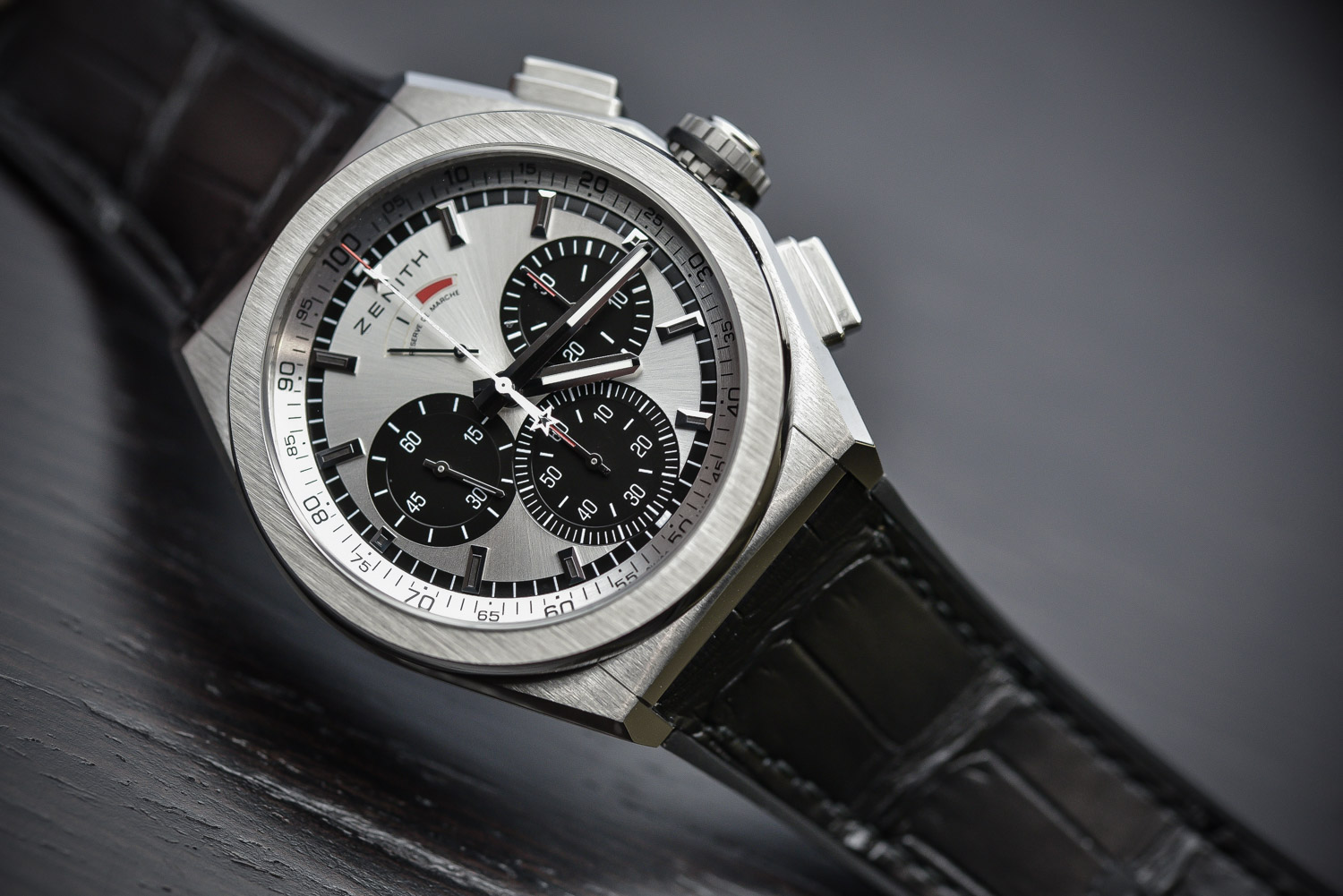

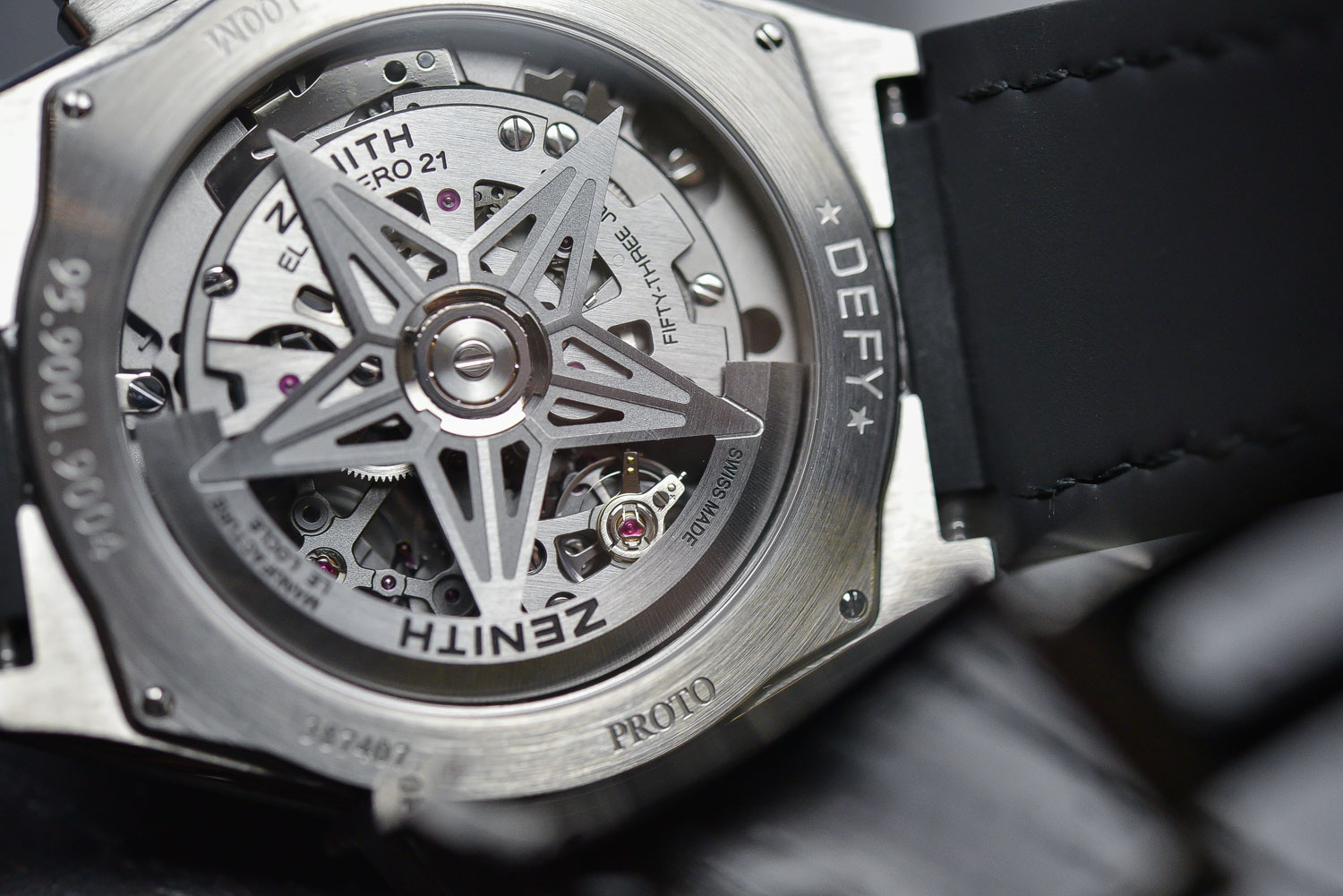

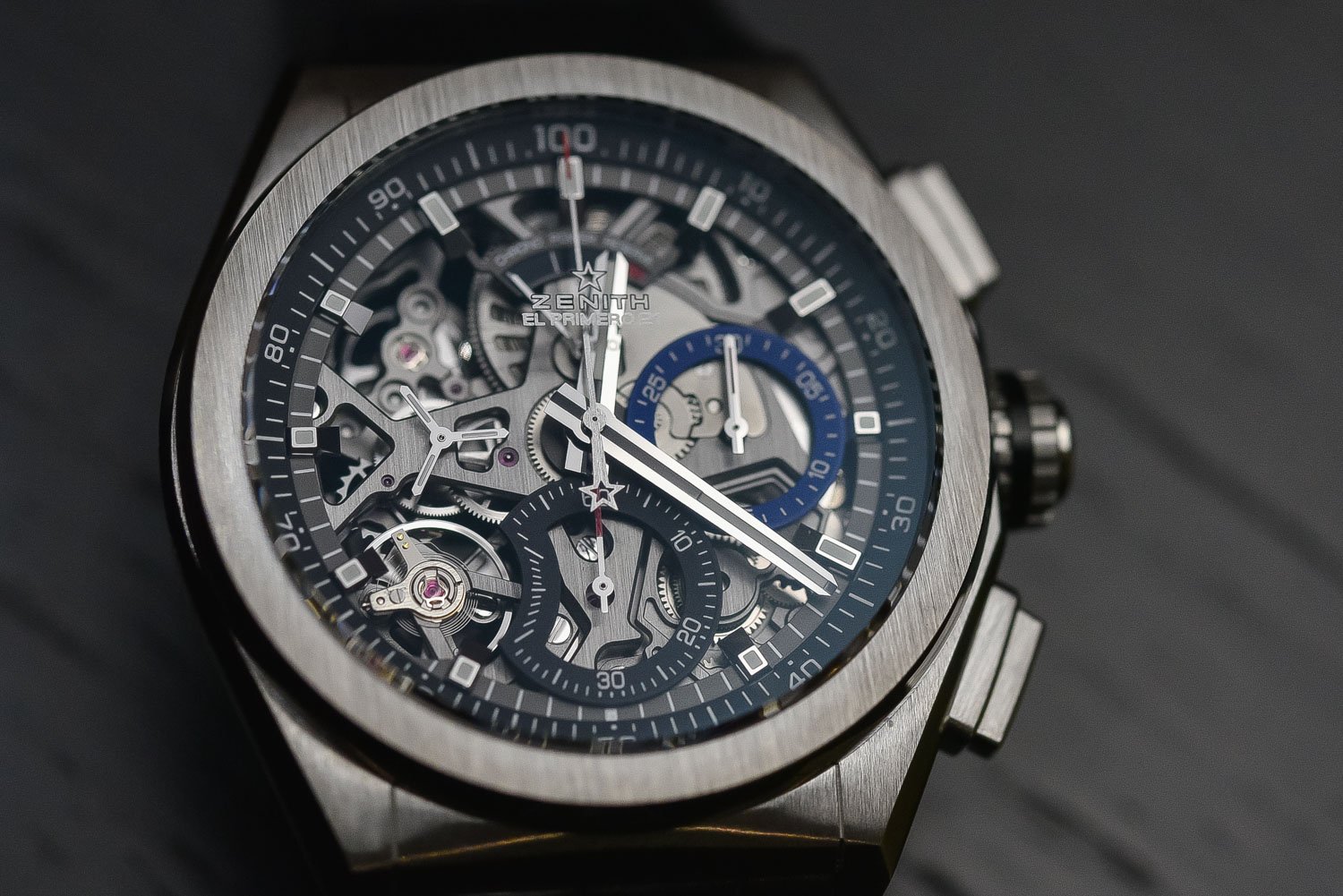
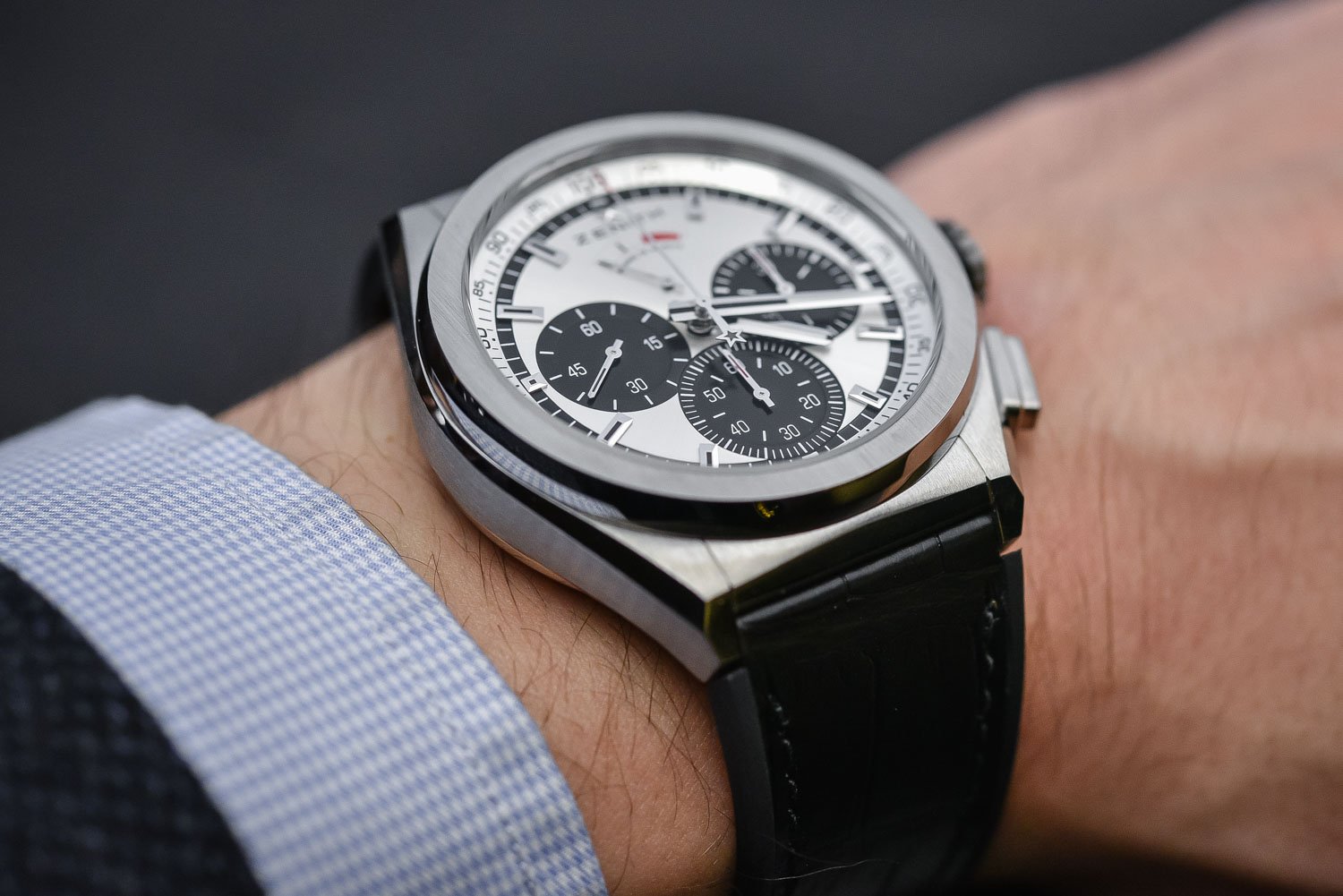





2 responses
Hi Brice,
thanks for the insight in this great timepiece. In my opinion this is a huge step forward in chronograps, especially – as you highlighted – because of the “mass production” idea that’s behind it. These are facts and not marketing, many brands put on the market one-off pieces beating at fast rate, but few or none industrialize the process.
Well done Zenit and Mr. Biver !
Regards,
slide68
I was thrilled with the innovative two transmission approach/ the appeal to higher speed / high performance.
Unfortunately Zenith lost me on the massive clunker look of s 44mm watch. They should have stopped at 41 1/2 .
Great price point. Bad choice to cross into forbidden territory for the diameter.
What manufacturers don’t realize is that first impressions count. When you see an oversized watch the first impression is attention seeking, but coupled with that is the thought that this wearer likely is wearing some cheap quartz watch picked up at the local mall.
Easy remedy. Issue the same watch in 41mm and give customers a choice 🙂